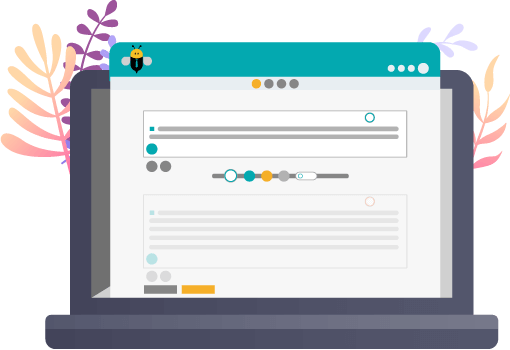Note-taking in meetings is an art that any good participant can acquire with patience, but especially with listening. Taking notes is a difficult task and I will outline here, the important steps to consider in order to be successful and have more effective meetings.
1. Identify the note taker
First, it is important to decide who will take notes of the meeting. It may always be you, or if not, I suggest that you rotate this responsibility within the work team. If meeting management software is used, there may even be more than one of you collaborating on note-taking.
2. Be well prepared
Before the meeting, review the agenda and use it as a guide. Find out what topics will be discussed, who will have a role to play, what the objectives are, and most importantly, read the content of the meeting. The content of the meeting depends greatly on the type of meeting that will be held.
3. Use the best tool for you
Do you prefer to use the traditional notepad and pencil or are you more of a techno type? Everyone has a preference, so why not combine the two? But the fact remains that in today’s work environment, everything moves very fast. So in our opinion, the best note-taking tool is a meeting management system (CMS). It’s also the best tool for documenting your online meetings.

Pros and cons of using the notepad
Pros
- Keep attention with your teammates, because we look at people in the eye more often when writing by hand.
- Have a better understanding of what is being said, because we summarize more.
Cons
- Slower to write.
- Difficulty reading back because you write quickly.
- Notebooks must be kept.
- Searching through old notes can become laborious.
- Have to rewrite what has been written. Transcription often limits people to forwarding the minutes.
Pros and Cons of Using a Computer, Tablet, or Smartphone
Pros
- Write faster on the computer than by hand.
- Save time: no need to retype later.
- Allow you to be actively involved in the meeting.
- Be a collaborator instead of a spectator.
- Can immediately update tasks.
- More than one person can be designated as a note-taker (collaborative notes).
- Notes are automatically available to all participants. So we can have quick feedback.
- We don’t need to be in the same room; just log in to the remote meeting.
Cons
- May give the impression that people are working on something else.
- More distracting if you find the meeting boring.
4. Listening and being attentive
When taking notes, you must listen and be attentive to everything that is said. You must first understand the whole discussion and then write down. Otherwise, it will not be well understood afterward. This will allow you to keep the essence of the points that have been discussed.
Be careful: The more you write, the less you listen. You don’t have to write EVERYTHING down. Select useful information according to the objectives of the meeting.
Here are the points you should pay particular attention to:
- Decisions that are made.
- Actions to be taken
- Tasks that are assigned
- Sensitive information that must be retained or recorded *.
- The next steps after the meeting
* Record a meeting allows you to:
- Save time: Reduce your time spent on note-taking in meetings and transcription in post-meeting.
- Increase your productivity: You can listen again to elements that you have missed or because of a lack of understanding in order to accurately write up your minutes.
- Be accurate: Recording the meeting greatly improves the accuracy of your notes, as you will eliminate problems resulting from incomplete or incorrect notes.
- Protection: Recording all or part of a meeting can be used as evidence in case of disagreements or misunderstandings or simply to confirm facts.

5. Structure your notes
Make a habit of always taking your notes in the same way. Use bullet lists, to-do lists, keep them concise, use keywords, common abbreviations (D.I.Y. = do it yourself, CEO = Chief Executive Officer) and personal (BRB = be right back) In order to save time, take notes directly on the computer/tablet/smartphone.
6. Don’t hesitate to interrupt the meeting
When taking notes, if you feel a topic is unclear, don’t hesitate to interrupt the speaker. Ask questions, ask him to repeat or clarify the topics discussed. This may seem inappropriate or even rude, but it is not the case. If you were paying attention and missed something, people will be happy to repeat it. Probably other participants are in the same situation as you are and don’t dare to ask questions.
If you are still uncomfortable having people rehearse, that you are an introverted person, at your next meetings, use the recording. It will be an asset for you.
On another note, when you see that the meeting does not stay focused on the original objectives, it may be a good idea to interrupt the meeting and get people back on track. This is a task that needs to be done by the leader, but he also needs to have some support from the partners.
7. Complete your notes immediately after your meetings
Reread your notes immediately, you’re still in the thick of it! Check that nothing has been forgotten, complete some points, and organize your writing. Ideally, the minutes should be almost done by the end of the meeting. In order to spend little time in the post-meeting period, it is important to reread them within 24 hours! After this time, you forget 50% of what you heard.
To follow up on the same theme, I advise you to read the blog Transform your meetings through effective note-taking.
What are your tips for effective note-taking?










0 Comments